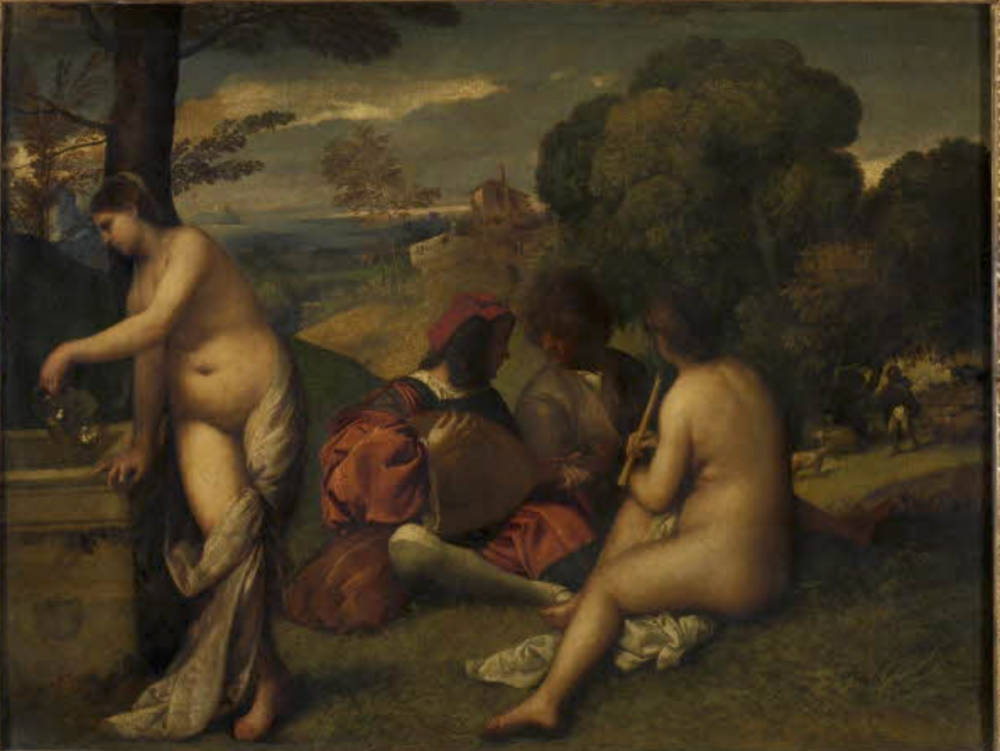
Le Concert champêtre [The Pastoral Concert]. Titian (Tiziano Vecello). 1509. 105 x 137 mm. Courtesy of the Louvre, Paris. “Collection de Louis XIV, acquis de Jabach en 1671.” [Painting in Louvre frame.] Click on image to enlarge it.
Commentary from the Louvre website
Traditionally attributed to Giorgione, The Pastoral Concert is now considered a work from Titian's youth. This mysterious painting is meant to be an allegory of Poetry, whose symbols - the flute and the pouring water - are shared between two nude women of ideal beauty. These unreal figures exist only in the imaginations of the two men they inspire, according to a taste widespread in Venice for simultaneous depictions of the visible and invisible.
A poetic world: Two young men, one dressed in a red costume with bloused sleeves and playing a lute, the other blond with bare feet and simply dressed, are seated in the center of a landscape of dells bathed in the light of sunset. One either side of them are nude women: one stands a little distance away and pours water into a fountain; the other, seated with her back to the viewer, plays the flute. In the background, under a grove of trees, a herdsman tends his sheep. The strangeness of the meeting of these two dressed men and two nude female figures suggests a complex meaning. It seems Titian wanted two worlds to confront one another here: Venetian aristocracy on the one hand, and nymphs and shepherds on the other. No one speaks: they communicate through music.
A pastoral landscape: The theme of music in a serene landscape might evoke an allegory of Poetry - a poem or a legend. Titian gives great weight to the landscape; it is not used as simple décor, but as a reflection of a certain state of mind. The search for balance is shown through the integration of these figures in a setting where man and nature must coexist in perfect harmony. This thought evokes the myth of Arcadia recounted in Virgil's Bucolics and reinterpreted by the Neapolitan poet Jacopo Sannazzaro. The myth tells of the happy life of the shepherds of Arcadia, whose existence is centered around music and song.
Giorgione and Titian: master and student: The conception and execution of this painting illustrates the youthful style of Titian. However, the work was for many years attributed to Giorgione. Around 1509 the two artists began to work in close collaboration, making it difficult to distinguish their respective styles. When Giorgione died from plague in 1510, Titian seemed his only possible successor in Venice. Taking over the commissions from his master's private clientele, the young painter became his designated heir. The correct attribution of this work has been discussed at different periods. In the collections of Louis XIV, it was considered a Giorgione; thereafter the authorship fell to Bellini, then to Palma Vecchio or Sebastiano del Piombo; then it was deemed a Giorgione-Titian collaboration until finally, despite some controversy, the work was assigned to Titian. The history of the painting prior to its entry into French collections is unknown.
Last modified 19 September 2020